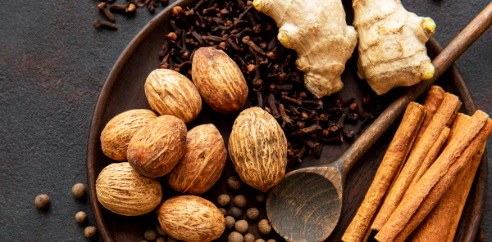Content Menu
● Introduction to Cinnamon Bark Extract
>> Extraction Methods
● Quality Control
● Regulatory Compliance
● Market Trends and Future Prospects
● Conclusion
● FAQ
>> 1. What are the common extraction methods for cinnamon bark extract?
>> 2. How does quality control impact the final product?
>> 3. What are the key regulatory compliance factors for contract manufacturing?
>> 4. What are the benefits of using subcritical extraction for cinnamon bark?
>> 5. How does ultrasonic extraction enhance the extraction process?
● Citations:
Cinnamon bark extract is a valuable product derived from the bark of the cinnamon tree, known for its rich content of bioactive compounds such as cinnamaldehyde, cinnamic acid, and coumarin. These compounds contribute to its medicinal properties, including anti-inflammatory, antioxidant, and antimicrobial effects. Contract manufacturing of cinnamon bark extract involves several critical steps to ensure high-quality products. This article will delve into the best practices for contract manufacturing cinnamon bark extract, covering extraction methods, quality control, and regulatory compliance.

Introduction to Cinnamon Bark Extract
Cinnamon bark extract is widely used in the food, pharmaceutical, and cosmetic industries due to its flavoring and medicinal properties. The extraction process is crucial for obtaining a high-quality extract with desired bioactive compounds.
Extraction Methods
Several extraction methods are used for cinnamon bark, each with its advantages and specific applications:
1. Subcritical Extraction: This method involves using temperatures between 110°C to 130°C and pressures of 20 to 40 bar to extract flavoring compounds efficiently. It is beneficial for preserving the bioactivity of the compounds.
3. Solvent Extraction: Common solvents include ethanol and petroleum ether. This method involves mixing the solvent with cinnamon bark powder and then evaporating the solvent to obtain the extract.
4. Supercritical CO2 Extraction: This method uses carbon dioxide at high pressures to extract bioactive compounds without leaving residues. It is environmentally friendly and can produce high-quality extracts.
Quality Control
Quality control is essential to ensure that the final product meets the required standards. This involves:
1. Raw Material Selection: High-quality cinnamon bark is crucial for obtaining extracts with desired bioactive compounds. The bark should be free from contaminants and have a consistent composition.
2. Extraction Conditions: Optimizing extraction conditions such as temperature, time, and solvent ratio can significantly impact the yield and quality of the extract. For instance, higher temperatures can increase the extraction rate but may also degrade sensitive compounds.
3. Purification Methods: Techniques like resin gel column purification can be used to enhance the purity of the extract. This method involves passing the crude extract through a resin column to remove impurities.
4. Testing and Analysis: Regular testing for contaminants, heavy metals, and bioactive compounds is essential. Techniques such as HPLC (High-Performance Liquid Chromatography) and GC-MS (Gas Chromatography-Mass Spectrometry) are commonly used for analysis.
Testing Parameters for Cinnamon Bark Extract
| Parameter |
Method |
| Cinnamaldehyde Content |
HPLC |
| Heavy Metals |
Atomic Absorption Spectroscopy |
| Microbial Contamination |
Plate Count |
Regulatory Compliance
Contract manufacturers must comply with relevant regulations to ensure the safety and legality of their products. This includes:
1. GMP Compliance: Following Good Manufacturing Practices (GMP) ensures that products are manufactured in a controlled environment. This includes maintaining clean facilities, using validated equipment, and training personnel.
2. Labeling and Packaging: Proper labeling and packaging are crucial for consumer safety and regulatory compliance. Labels should include accurate information about ingredients, dosage, and storage conditions.
3. Testing and Certification: Regular testing for contaminants and bioactive compounds, along with obtaining necessary certifications, is essential. Certifications like ISO 9001 for quality management and ISO 22000 for food safety are beneficial.
Regulatory Compliance Checklist
| Requirement |
Description |
| GMP |
Ensure manufacturing environment meets GMP standards. |
| Labeling |
Provide accurate and compliant labeling. |
| Testing |
Conduct regular testing for contaminants and bioactives. |
Market Trends and Future Prospects
The demand for cinnamon bark extract is increasing due to its health benefits and natural origin. Trends in the market include:
1. Sustainability: Consumers are increasingly looking for products that are sustainably sourced and produced. Manufacturers can benefit from adopting eco-friendly extraction methods like supercritical CO2 extraction.
2. Functional Foods: The use of cinnamon bark extract in functional foods is growing. It is added to products like energy bars, beverages, and dietary supplements due to its potential health benefits.
3. Pharmaceutical Applications: Research into the medicinal properties of cinnamon bark extract is expanding its potential applications in the pharmaceutical industry.
Conclusion
Contract manufacturing of cinnamon bark extract requires careful consideration of extraction methods, quality control measures, and regulatory compliance. By optimizing these factors, manufacturers can produce high-quality extracts that meet the demands of various industries. The use of advanced extraction techniques like subcritical and ultrasonic extraction can enhance the efficiency and bioactivity of the final product. As the market continues to grow, adopting sustainable practices and exploring new applications will be key to success.

FAQ
1. What are the common extraction methods for cinnamon bark extract?
- Answer: Common extraction methods include subcritical extraction, ultrasonic extraction, solvent extraction, and supercritical CO2 extraction.
2. How does quality control impact the final product?
- Answer: Quality control ensures that the final product meets required standards by optimizing extraction conditions, selecting high-quality raw materials, and using effective purification methods.
3. What are the key regulatory compliance factors for contract manufacturing?
- Answer: Key factors include GMP compliance, proper labeling and packaging, and regular testing and certification.
4. What are the benefits of using subcritical extraction for cinnamon bark?
- Answer: Subcritical extraction helps preserve the bioactivity of compounds and can increase extraction efficiency.
5. How does ultrasonic extraction enhance the extraction process?
- Answer: Ultrasonic extraction uses ultrasonic waves to enhance solvent penetration and increase the efficiency of the extraction process.
Citations:
[1] https://pmc.ncbi.nlm.nih.gov/articles/PMC6859177/
[2] https://patents.google.com/patent/CN107496269A/en
[3] https://huggingface.co/openbmb/cpm-bee-1b/commit/bd72a61dd7a59086ed7456f1dfcaa995c8ec58a3.diff
[4] https://www.scielo.br/j/rbca/a/YT3zYykmF3Dr8kSJgdLR8Lt/
[5] https://patents.google.com/patent/CN103865653A/en
[6] https://pmc.ncbi.nlm.nih.gov/articles/PMC10195174/
[7] https://www.tokiwaph.co.jp/en/2021-07-26/
[8] https://echa.europa.eu/substance-information/-/substanceinfo/100.075.864





























